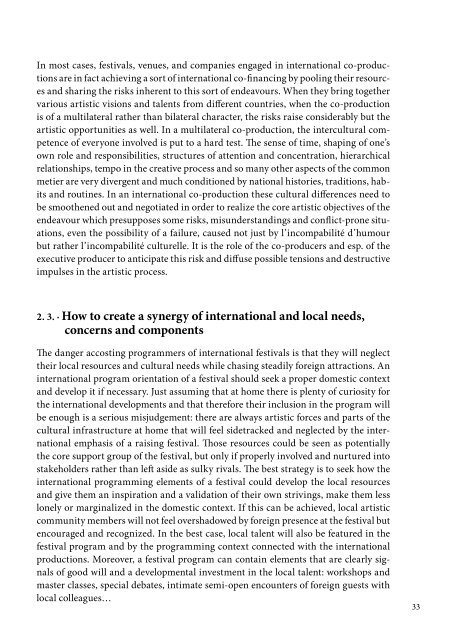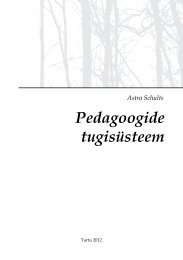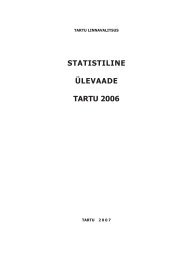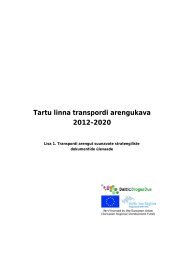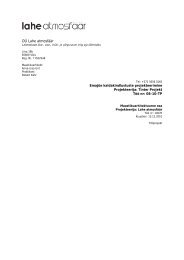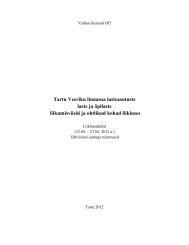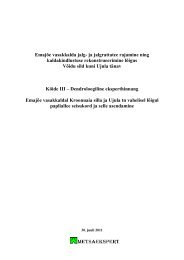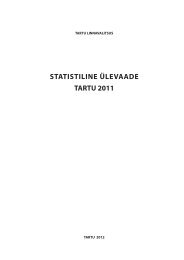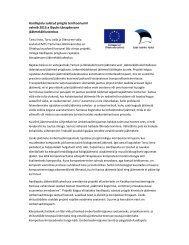Festivals - Tartu
Festivals - Tartu
Festivals - Tartu
You also want an ePaper? Increase the reach of your titles
YUMPU automatically turns print PDFs into web optimized ePapers that Google loves.
In most cases, festivals, venues, and companies engaged in international co-productions<br />
are in fact achieving a sort of international co-financing by pooling their resources<br />
and sharing the risks inherent to this sort of endeavours. When they bring together<br />
various artistic visions and talents from different countries, when the co-production<br />
is of a multilateral rather than bilateral character, the risks raise considerably but the<br />
artistic opportunities as well. In a multilateral co-production, the intercultural competence<br />
of everyone involved is put to a hard test. The sense of time, shaping of one’s<br />
own role and responsibilities, structures of attention and concentration, hierarchical<br />
relationships, tempo in the creative process and so many other aspects of the common<br />
metier are very divergent and much conditioned by national histories, traditions, habits<br />
and routines. In an international co-production these cultural differences need to<br />
be smoothened out and negotiated in order to realize the core artistic objectives of the<br />
endeavour which presupposes some risks, misunderstandings and conflict-prone situations,<br />
even the possibility of a failure, caused not just by l’incompabilité d’humour<br />
but rather l’incompabilité culturelle. It is the role of the co-producers and esp. of the<br />
executive producer to anticipate this risk and diffuse possible tensions and destructive<br />
impulses in the artistic process.<br />
2. 3. · How to create a synergy of international and local needs,<br />
concerns and components<br />
The danger accosting programmers of international festivals is that they will neglect<br />
their local resources and cultural needs while chasing steadily foreign attractions. An<br />
international program orientation of a festival should seek a proper domestic context<br />
and develop it if necessary. Just assuming that at home there is plenty of curiosity for<br />
the international developments and that therefore their inclusion in the program will<br />
be enough is a serious misjudgement: there are always artistic forces and parts of the<br />
cultural infrastructure at home that will feel sidetracked and neglected by the international<br />
emphasis of a raising festival. Those resources could be seen as potentially<br />
the core support group of the festival, but only if properly involved and nurtured into<br />
stakeholders rather than left aside as sulky rivals. The best strategy is to seek how the<br />
international programming elements of a festival could develop the local resources<br />
and give them an inspiration and a validation of their own strivings, make them less<br />
lonely or marginalized in the domestic context. If this can be achieved, local artistic<br />
community members will not feel overshadowed by foreign presence at the festival but<br />
encouraged and recognized. In the best case, local talent will also be featured in the<br />
festival program and by the programming context connected with the international<br />
productions. Moreover, a festival program can contain elements that are clearly signals<br />
of good will and a developmental investment in the local talent: workshops and<br />
master classes, special debates, intimate semi-open encounters of foreign guests with<br />
local colleagues…<br />
33


